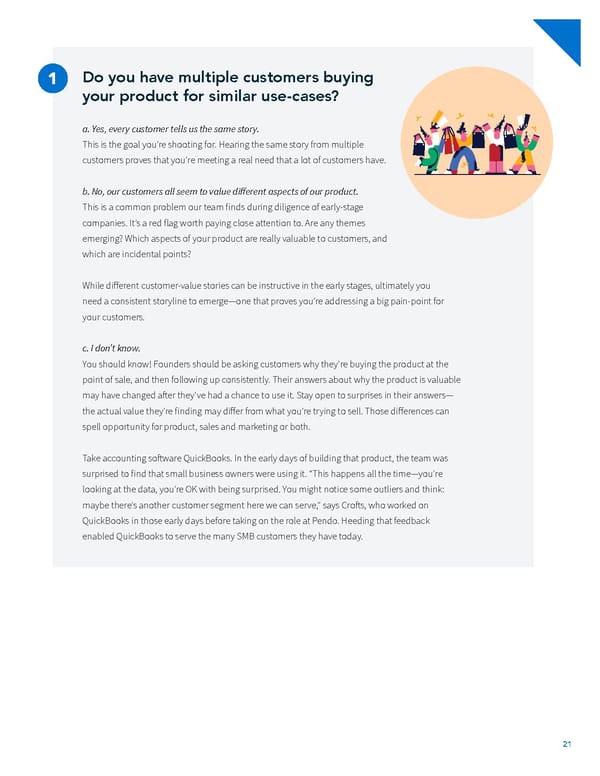Do you have multiple customers buying your product for similar use-cases? a. Yes, every customer tells us the same story. This is the goal you’re shooting for. Hearing the same story from multiple customers proves that you’re meeting a real need that a lot of customers have. b. No, our customers all seem to value different aspects of our product. This is a common problem our team ifnds during diligence of early-stage companies. It’s a red lfag worth paying close attention to. Are any themes emerging? Which aspects of your product are really valuable to customers, and which are incidental points? While different customer-value stories can be instructive in the early stages, ultimately you need a consistent storyline to emerge—one that proves you’re addressing a big pain-point for your customers. c. I don’t know. You should know! Founders should be asking customers why they’re buying the product at the point of sale, and then following up consistently. Their answers about why the product is valuable may have changed atfer they’ve had a chance to use it. Stay open to surprises in their answers— the actual value they’re ifnding may differ from what you’re trying to sell. Those differences can spell opportunity for product, sales and marketing or both. Take accounting sotfware QuickBooks. In the early days of building that product, the team was surprised to ifnd that small business owners were using it. “This happens all the time—you’re looking at the data, you’re OK with being surprised. You might notice some outliers and think: maybe there’s another customer segment here we can serve,” says Crotfs, who worked on QuickBooks in those early days before taking on the role at Pendo. Heeding that feedback enabled QuickBooks to serve the many SMB customers they have today. 21
 Guide to Breaking into the Enterprise Market Page 20 Page 22
Guide to Breaking into the Enterprise Market Page 20 Page 22